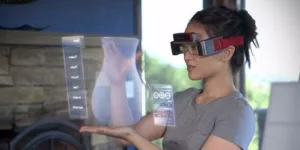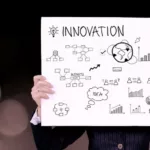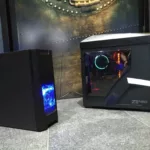Let’s start with some background. Virtual Reality and Augmented Reality are one the most popular and growing trends in IT. According to Digi-Capital, AR market could reach 120 Billion US$ BY 2020. While VR require headset and many companies entered this domain (facebook with Oculus acquisition, Samsung with the GearVR, Google with DayDream VR, HTC with Vive, Sony with PSVR), AR at it’s basic doesn’t require additional hardware than mobile. Unlike VR, AR is still not the big companies’ battle ground. Google bets on VR and developed the VR Daydream in order to become the standard operation system for VR (like Android for VR).
As CEO of AppReal-VR, a software development company specialized in VR and AR development, I can say that VR is very trendy and verticals such as Tourism, hospitality, education, architecture, cars and others are the early adopters of this technology – the market is still small. We can estimate that worldwide there are around 1M-2M VR users Max. Next year this number can grow 10X times and in 2 years there could be 50M VR users worldwide. Many companies invest a lot of money in VR and they should – the level of experience and engagement can’t be compared to anything else. AR is more ‘down to earth’ and been adopted mostly by enterprizes and obviously games companies. Verticals such as retail, marketing agencies, publishers, interior design are developing AR apps and products. Unlike VR, good AR app can reach tens of millions as we all know from the Pokemon Go success, which reached 45 Million daily users at its’ peak (according to Bloomberg). Snap is another example of AR (with its AR filters) being used by mass market.
The basic idea behind AR is to use 3D objects as a layer on top of the real environment outside. Usually you also need a ‘marker’ that the phone camera recognizes and then start some kind of animation. Let’s say I plan to place AR glasses on top of a real table – the camera should identify the table.
But how can a camera can identify the selected object – the ‘marker’? You create a close list of selected objects (Markers) or use software that identifies objects automatically.
Today, when app developer or a company develop AR they usually use ‘ready made’ tools such as Wikitude or vuforia. These are tools which you can buy and integrate in your App or product. So, in order for a user to ‘enjoy’ AR experience, he should download your AR App first. Only then, the phone camera would be able to identify the objects you are interested in. Today the user experience in AR is in two steps – make sure your customer download the new AR App, and then he can play with your App. So, if Ikea plan a new AR experience they should make sure users download their new AR App.
There are companies that find this two steps process – annoying. There users that hesitate whether to download another App. What if this two steps process – can become one step? Just pointing your camera to an object and enjoy AR experience?
Theoretically it can be done, but probably only by making sure your regular camera can also identify these objects.
Apple has acquired several AR companies recently. Metaio, AR tool developer was acquired on May 2015; Apple acquired Flyby Media (developed next-generation consumer mobile social applications that connect the physical world ) on early 2016. And I am aware of at least another AR acquisition by Apple.
On july 2016 Tim cook, Apple CEO said “AR can be huge”.
So, does Apple create the new ‘vuforia and wikitude’ and integrate it into their iPhone camera? Probably so. This will make the iOS preferred platform for AR developers, which will have one SDK to develop with and it will reach 50% of the mobile users (or at least the new iPhone versions I assume). This probably means that advertisers will follow fast – from that moment IKEA (or any other company) will not have the need to choose the right AR tool, to build a new AR App and distribute it. The AR features will be part of the new version the users will get automatically.
I believe that this is Apple’s case to disrupt the AR market. I believe this is a very good plan for a player such as Apple, who usually enter the market when the technology is mature enough. And with Apple’s U.S. Patent No. 9,488,488 recently filed – “Augmented reality maps”, a patent that talks about a mapping app having the ability to understand iPhone’s advanced sensor- Apple’s plan becomes real. This patent will allow the users to witness real-time augmented views that surrounds their environment and is the beginning of making iOS as the AR operating system.
Whether Apple will succeed? Only time can tell. One thing is for sure – 2017 is going to be very interesting year for AR and VR.








